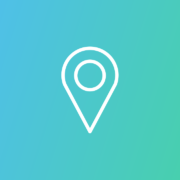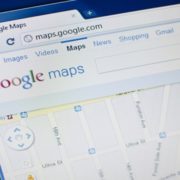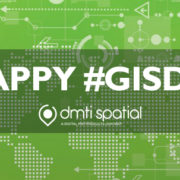How Geolocation changes Marketing
By Robert Szyngiel, DMTI Spatial
What do Starbucks, Whole Foods, Taco Bell and L’Oreal have in common? They are among the first wave of brands to dip their toes into the geolocation pool. By recognizing the power of location as a strategic marketing tool, these companies have demonstrated that it can be leveraged to successfully boost customer acquisition and retention.
So, what is geolocation-based marketing? It refers to using individuals’ exact physical locations – which are received via their GPS-enabled mobile or wearable devices – to push out highly relevant and personalized messaging, including advertisements, discount coupons and promotions.
A core direct marketing technique, geolocation is all about building intent-based relationships. If you are aware of the location of a prospect you can use other known parameters, such as their occupation, age and interests to determine what they are doing at that location and send out messaging to drive them toward your business.
Not surprisingly, one of the key requirements for geolocation to work as an effective marketing strategy is the willingness of consumers to share their personal information with businesses. So as long as businesses supply genuine value-addition to their customers there is no good reason for them to ignore the vast and untapped potential of geolocation. After all, geolocation-based marketing helps companies to not only recognize their customers but it also equips them to interact with those customers in real time.
Geolocation is transforming the marketing landscape
Marketers are no stranger to location-targeting offered by major ad platforms like Google AdWords or Bing Ads. But this feature only skims the surface of what geolocation can do for businesses.
Here are several ways in which you can expect geolocation to change marketing:
Data-driven marketing
Customers like brands that “get” them. They stay loyal to businesses that understand their exact requirements: which cannot be achieved without continued access to accurate data. The need for building precise customer profiles means more companies are going to invest in data-driven marketing; A location-based framework is an ideal way to map existing customers in relation to your own stores or that of your competitors. Having reliable data also comes in handy while identifying potential customers located in the proximity of the existing client base. And when you are looking for important trends and patterns to help with your marketing strategy, having correct addresses guarantees direct mail cost savings. For example, if you know which communities have French-speaking customers you can channel French-language messages to them and drive them to your nearest store
Improved app engagement
Many businesses have their own apps, providing a quick and convenient way to access the geolocation of any customer who has consented to location data-sharing. By erecting virtual fences (a.k.a. geofencing) around stores or sites companies can push out highly personal and relevant messages to the customers who are present within those specified areas. Starbucks uses this technique to distribute discount coupons to its patrons for use at nearby stores.
Similarly, companies can also use geolocation to enhance the customer experience. For example Taco Bell allows customers to place their orders via the mobile app and then tracks their locations to ensure that when the customers arrive at the stores their food is hot and ready;
Predictive alerts
What happens when you give geolocation a booster shot of machine learning and artificial intelligence (AI)? You get predictive alerts that take personalization to an awesome new level. By studying a customer’s in-app behaviour or analyzing their historical shopping data, predictive algorithms can determine when a patron is most likely to be near the location of a store and send out offer alerts accordingly.
Since this marketing technique is most effective when the customer has not decided to buy but is likely to, companies can fuse it with a “remind me” element, wherein a customer can ask the app to remind them of the offer at a particular time. For example, a brewery can push out a deal in the morning if it notices a trend of customers visiting pubs on Fridays. And to solidify the intent, the app can also offer to remind customers of the discount deal again at 5 pm, when they are most likely to be leaving from work;
Geo-conquesting
An offshoot of geofencing, geo-conquesting refers to attracting customers away from the competition when they are near a competitor’s location. Whole Foods has effectively deployed this technique to lure customers away from competing supermarkets. By strategically offering customers better deals in exchange for travelling to a nearby Whole Foods store, it is able to influence patrons’ buying decisions in its favour. There are no reasons why other businesses will not be seen replicating this success in the near future;
Managing micro-moments
According to Google, micro-moments are intent-rich moments that occur “when people reflexively turn to a device —increasingly a smartphone — to act on a need to learn something, do something, discover something, watch something, or buy something.” This kind of customer behaviour has made it imperative for businesses to be ready with the most relevant information when the “moment” strikes.
Geolocation plays an indispensable part in managing this on-demand economy, for when people look for a restaurant, a convenience store or any other business, they want one that is “near” them. Expect to see successful companies leverage geolocation in novel ways to get in front of their customers during these moments and knock out the competition; and
Augmented Reality
Augmented reality (AR) is a new geolocation technology trend that leaves an indelible impact on customers. AR refers to the overlaying of technology-based elements on real, physical surroundings of a person to create a virtual world of sorts. L’Oreal has been an early AR adopter, with one of its events showcasing virtual artworks to customers depending on their physical locations at the event’s site. Expect AR to create new waves in marketing as more companies realize how they can use location technology to give incomparable product demos to patrons. For example, a furniture store can show you exactly how a new table would look inside your living room.
In conclusion, so, while there is no doubt that geolocation is all set to revolutionize the way companies market, they will need a solid hold on the geolocation business, arming themselves with the right data and tools that would allow them to implement an effective geolocation-based marketing strategy.
 Robert Szyngiel leads product management at DMTI Spatial, a Digital Map Products company. For more information on DMTI Spatial, visit www.dmtispatial.com, and for information on Digital Map Products, visit www.digmap.com.
Robert Szyngiel leads product management at DMTI Spatial, a Digital Map Products company. For more information on DMTI Spatial, visit www.dmtispatial.com, and for information on Digital Map Products, visit www.digmap.com.
Additional Reading:









